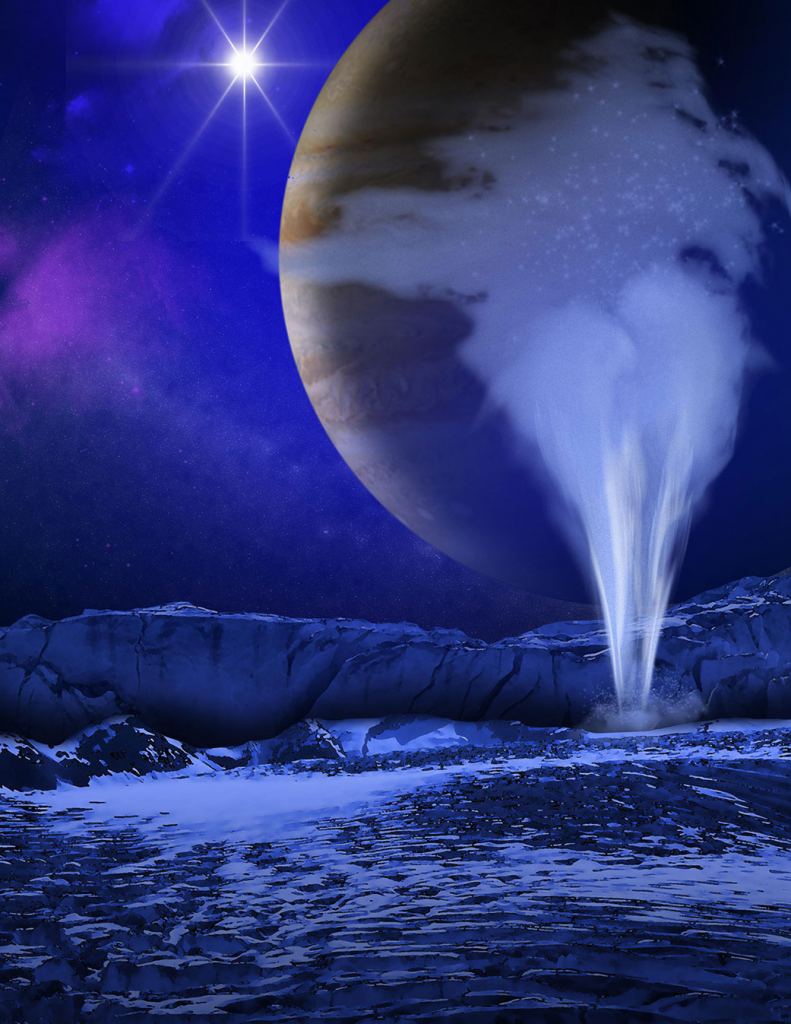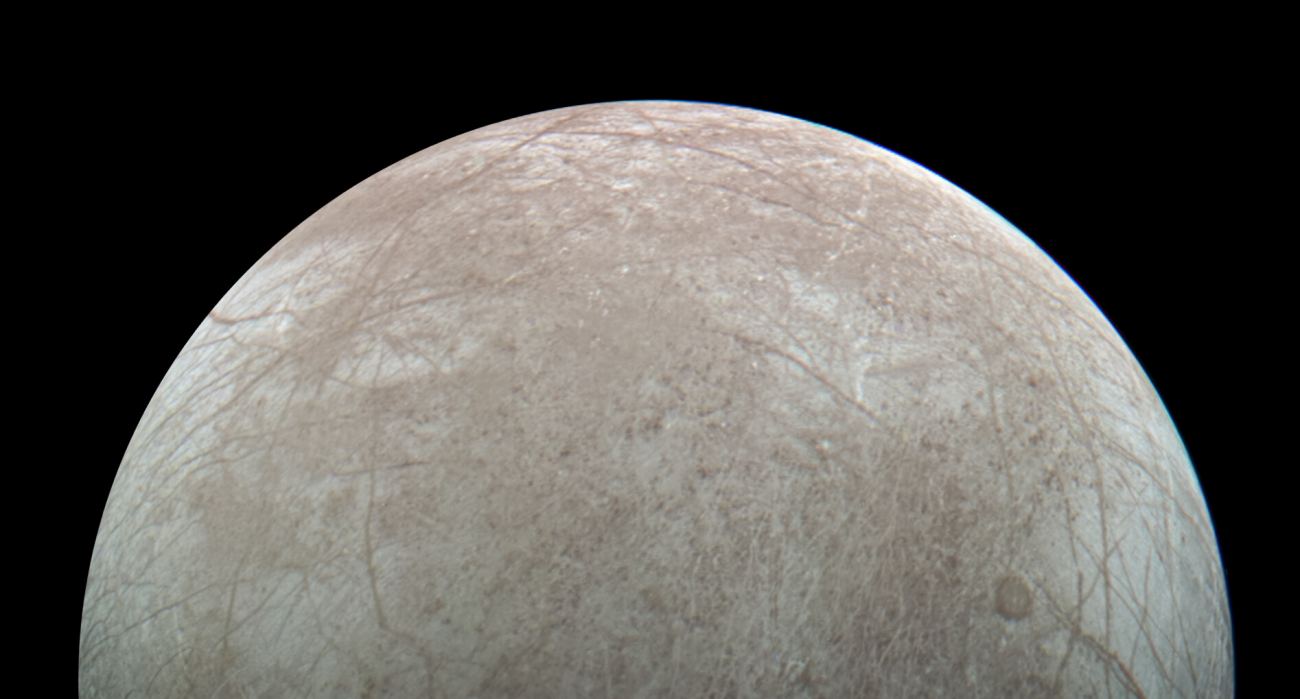“All these worlds are yours except Europa. Attempt no landings there.” That was the ominous message sent to Earth in the movie “2010” when Jupiter was about to transform to become a star. Thanks to that transformation, Europa would become a life-bearing world. The aliens didn’t want Earthlings messing that up. That was in the movie.
Luckily for us in the non-movieland solar system, we CAN visit this tiny moon. Several spacecraft, including Juno have done flybys. And, humans are sending a probe there to figure out just how habitable it can be under its frozen surface. The Europa Clipper, set for launch in 2024, is an astrobiology mission, but it’s not necessarily going there to detect life signs. Instead, it will explore Europa in more detail than any mission before to understand what makes it habitable. It will fly past this tiny water world more than 50 times, gathering data with a collection of instruments. Europa Clipper won’t land, but it will pave the way for a later mission that will send a robotic probe or maybe even a submarine underneath the surface.
Planning for Europa and the Search for Lakes
Before Europa ever leaves Earth, however, scientists need a lot more information in order to plan its mission. They know there’s water there. But, a lot of questions remain unanswered about it. There’s an interesting hypothesis about Europa: that it has shallow lakes under the icy surface. Sure, there’s also a deep ocean, but not all water has to be in the Europan sea. Planetary scientists know that much from the Galileo orbiter. But, how close to the surface does the ocean extend? Could shallow lakes also be hidden there?

Such briny lakes could be quite accessible and they could play a role in Europa’s cryovolcanic activity. These “cryoreservoirs” could actually trigger eruptions of geyser-like activity extending from beneath the surface out to space. How could this happen? The pressure in these reservoirs changes as the volume of liquid water expands to become water ice. Give them enough pressure, and geysers erupt with plumes of ice particles.
A recent paper shows that shallow reservoirs located in relatively cold ice deform their “casings” slightly. As they freeze, pressure builds up on the ice walls surrounding the water. Deeper ones located in warmer ice (perhaps closer to Europa’s heated core) deform more easily. For some of those under-ice lakes, that means they don’t get enough pressure buildup to send geysers out. They might, instead, send “warmer” icy slush as a form of “cryomagma.”
Modeling Lakes for Europa Clipper’s Search
The research behind the most recent paper is giving planetary scientists a much better idea about Europa’s hidden lakes. They could be as close as a few kilometers to the surface, perhaps 4 – 8 kilometers. Their depths will indicate just how actively they’d send eruptions to the surface. In addition, the location would tell scientists what types of lakes send water vapor or slushy, flowing ice.
“We demonstrated that plumes or cryolava flows could mean there are shallow liquid reservoirs below, which Europa Clipper would be able to detect,” said Elodie Lesage, Europa scientist at NASA’s Jet Propulsion Laboratory in Southern California and lead author of the research. “Our results give new insights into how deep the water might be that’s driving surface activity, including plumes. And the water should be shallow enough that it can be detected by multiple Europa Clipper instruments.”
Scientists on the Europa Clipper mission will be able to use this research to aim a radar instrument—called Radar for Europa Assessment and Sounding: Ocean to Near-surface (REASON)—to search for lakes. The shallower the lake, the easier it might be for Clipper to find it.
“The new work shows that water bodies in the shallow subsurface could be unstable if stresses exceed the strength of the ice and could be associated with plumes rising above the surface,” said Don Blankenship, of the University of Texas Institute for Geophysics in Austin, Texas, who leads the radar instrument team. “That means REASON could be able to see water bodies in the same places that you see plumes.”
About Europa Clipper
Europa Clipper will carry a complete suite of sensitive instruments to study Europa. Upon its arrival in 2030, the science cameras will be able to make high-resolution color and stereoscopic images of the tiny moon. The thermal emission imager will use an infrared camera to map Europa’s temperatures and find clues about the moon’s geologic activity. That will include cryovolcanic activity being driven from beneath the icy surface. If plumes are erupting, they could be observable by the ultraviolet spectrograph, the instrument that analyzes ultraviolet light.
Ultimately, Europa Clipper’s mission will not only help scientists determine whether this wet little moon could support life. It will also give clues to how life developed on early Earth. And, in the far distant future, the mission’s data will help in the search for other habitable places beyond our own planet.
For More Information
NASA Study Suggests Shallow Lakes in Europa’s Icy Crust Could Erupt
Simulation of Freezing Cryomagma Reservoirs in Viscoelastic Ice Shells

